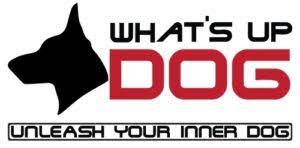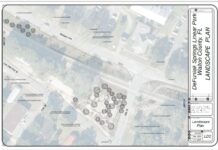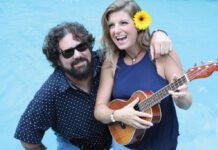By Steve Kotowske,
Have you ever considered what words you are using with your dog? Of course, we all love to belt out a Good Boy! Good Girl! or Good Dog! to our furry pals. Their faces light up, backsides wiggle, and they generally seem to love to hear how good they are! This is because we have tied the “good” expression to something super positive like affection, happiness, treats, food, or a toy. They get excited in anticipation of something “good” following your words. You taught them that!
We use that simple phrase to build our relationship with our dogs. Teaching them our language really can be that simple. You see, the dog’s brain, while being complex in structure, like all mammals, is also very limited in many ways. It has a frontal cortex, the part of the brain where higher-level processing and thoughts take place just like humans. However,it is far
less developed than it is in humans. The frontal lobe of a dog’s brain occupies only 10% of the brain while in humans it’s the front third of the brain.
Dogs also have emotions like sadness, fear or happiness, so we must recognize our dogs don’t process too much into the future. Dogs seem to live quite in the moment. They have terrific memory centers, however, and use those memories to process snap decisions for survival. Survival instincts for a dog include two basic functional questions – how do I stay safe? and, how do I get what I want? They use this over and over every day. They can be subtle in action or over the top in action to survive.
So, the big question of the day becomes, “What words are the hardest for a dog to process?” Well, now that we understand a little more about the way their brain functions we can, with near certainty, assume it is words of affirmation and permission. The two most understood words for a dog – IT’S OK!

These words are permissive words in almost every instance with a dog. However, when used when a dog is fearful, they can be dangerously misused. Many people will attempt to convince the dog to accept the fear by saying “it’s ok.” For instance, when an anxious dog is jumping up on a human, many will say ‘it’s ok’ and actually pet the dog – reaffirming the unwanted behavior through affection. This makes a dog very confused. It can make humans very frustrated because our empathetic nature doesn’t quite understand the black and white communication a dog needs and understands best. The next time your dog acts fearful, try reassuring them through being a leader and addressing the fear – not always head on, but sometimes by creating distance from the fear and reapproaching it repeatedly while closing the gap, eventually conquering the fear, building trust that you are in control with each approach. With each new approach and sign of fear, simply let the dog know the fear is not necessary and gain a little ground, reset and repeat. It takes time and good communication to build trust. A little bit of distraction as you get closer can work wonders for creating positive outcomes and overcoming fears. I use a bit of food or a toy when possible. Sometimes it is just getting the focus on me and using praise. We inch closer and the dog is none the wiser to the progress we’ve made each time, but it takes hold in the memory center. Eventually, the object of fear no longer matters. An owner’s ability to keep them safe matters!
Words matter. Body posture matters. Leadership matters. Be a great human and think through the process, then act upon it with confidence and patience. Proper communication always strengthens a relationship.
Steve Kotowske is Senior Trainer of What’s Up Dog in Santa Rosa Beach and MIramar Beach,offering Professional Dog Grooming, Dog Training, Boarding, and Doggie Daycare. “What’s up Dog” is the area’s largest independent pet retailer with a focus on holistic food products. Visit www.bestobedience.com for more information.

Views: 1






















































